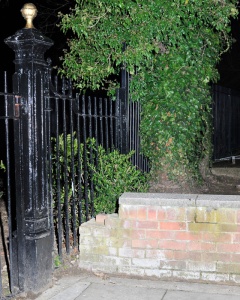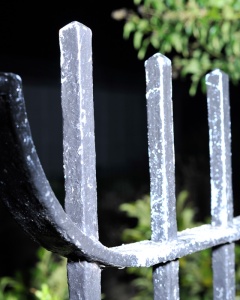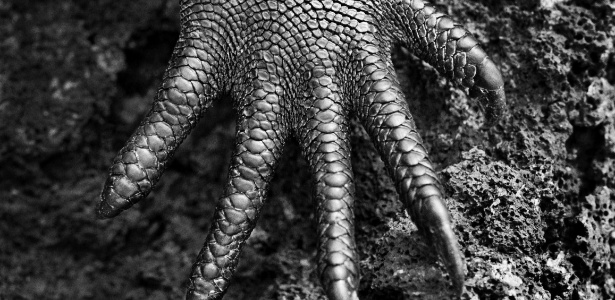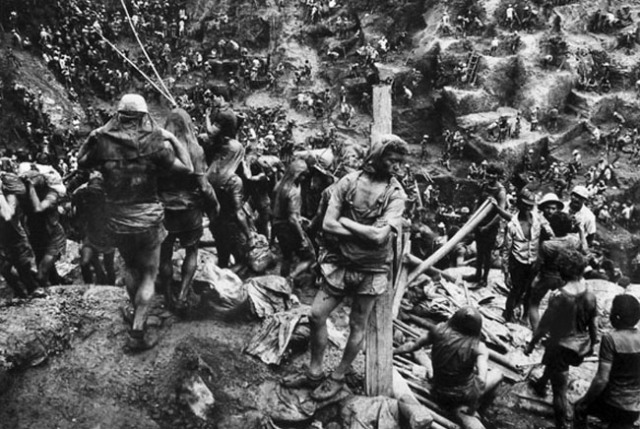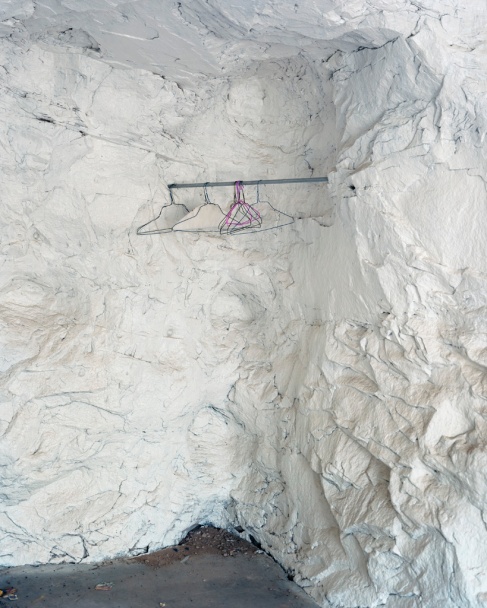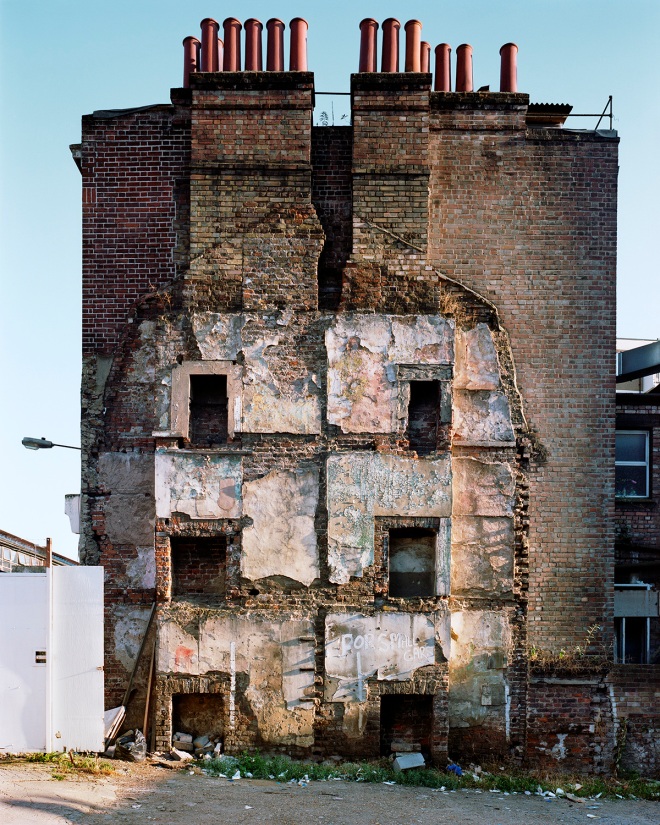
‘Our real times were spent out of school. I spurned authority, all the boys did. We used the derelict bombed houses as our hideaway places. They were the arenas for our obnoxious behaviour. We would buy a pennyworth of chips for our lunch, ram them into a dry roll and take it into a derelict house, climbing right to the top where we would sit and discuss things, as if we were in some kind of parliament.’
Don McCullin, Unreasonable Behaviour

An overall sense of loss pervades the work of brother and sister Beth and Thom Atkinson in their new book, Missing Buildings which, as the name suggests, is a typological study of the bombed-out spaces left in London from the second world war.
This impression is reinforced by the lonely streets, the unpeopled pavements and flat, empty skies. It’s as if the air raid sirens never stopped. As if the living have sought shelter below ground alongside the dead and other archaeological remains. An eerie calm pervades throughout.
As metaphors for memory – both collective and individual – and the cumulative effect of time, these traces of buildings act as a cypher to contemplation; not only about the legacy of war, but also the cycles of social and political change that shape a modern city. Much as weather is photography’s unintended subject, so the changing socio-economic landscape of London permeates Missing Buildings, asking us to look again, and question how far we’ve come.
The outlines of these spectral structures are sometimes hard to see. One might assume that the locating process took weeks of walking and looking. The reality, it seems, is less arduous, and opens a subtle element of ambiguity in the project. Thom describes how most sites are marked on official war record maps, but some aren’t. These ‘unknowables’ are nevertheless taken to be bomb sites, both by the photographers and by passing locals, who engage the pair, curious about the project.
The public recounting of war stories adds a sense of certainty to these unverified facts, and intriguingly, Beth and Thom conspire in this story-telling with photographic ‘evidence’ – enhancing and repeating the fiction. In other words, this is not an exhaustive – or reliable – compendium of sites, but a foray into the urban past, a process of awakening and patient revelation using photography as the key to unlocking a deeper, psychological connection with places imbued with myth.
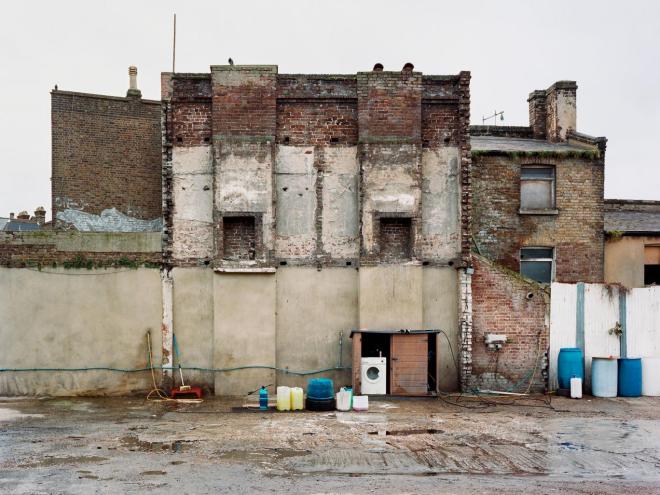
These places are remarkably, disconcertingly familiar. The urban syntax of regeneration, gentrification and disenfranchisement pervade. The side of one building – in graphic coincidence – is rendered ‘transparent’ by talented graffiti artists, showing the private décor of a fictional family, complete with ground floor pub and upstairs cat. An embarassed looking washing machine, surprised by its very public display, peeks apologetically out from a small shed onto a damp carwash courtyard. And a surrealist masterpiece – a giant monochrome rat – eyeballs the lens of Thom and Beth’s camera. Both unblinking.

This process of walking and looking unifies the project and connects the photographers to their subject as vulnerable pedestrians, at risk from speeding car or vindictive pigeon. We learn – in the insightful afterword by David Chandler – that their grandfather was an ARP warden, based in Balham during the Blitz, whose job it was to ‘map bomb impacts in the area.’ Beth and Thom continue in this tradition – walking, observing and recording – much as their grandfather had done 75 years earlier. They have created a fitting and timely memorial to their grandfather and to the bomb site victims.

In a picture from Goulton Road, Lower Clapton, a large billboard for a business directory proclaims ‘Knowledge is king.’ Next to it the ghostly, pointing, pock-marked apparition of what appears to be Lord Kitchener hovers above a sign which says ‘Cars wanted for cash.’ The memories of war, if we dare to look carefully, are everywhere.
Buy the book here.













